In the quiet mountains of Arunachal Pradesh, where the sky feels closer and the rivers sing softly, there lives a man whose hands are known to bring relief. Yashi Tenzing Lama is an Amchi—a traditional Tibetan healer from Rupa village in the West Kameng district. For nearly 30 years, people have come to him from far and wide, seeking relief from paralysis and other ailments, guided by faith in his healing touch.
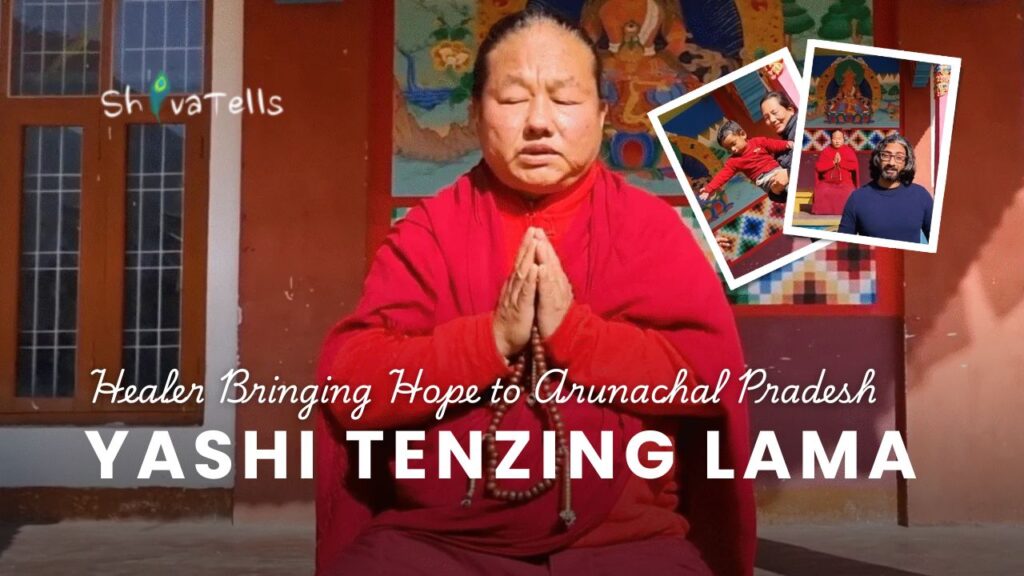
Table of Contents
A Gift of Healing, Not Power
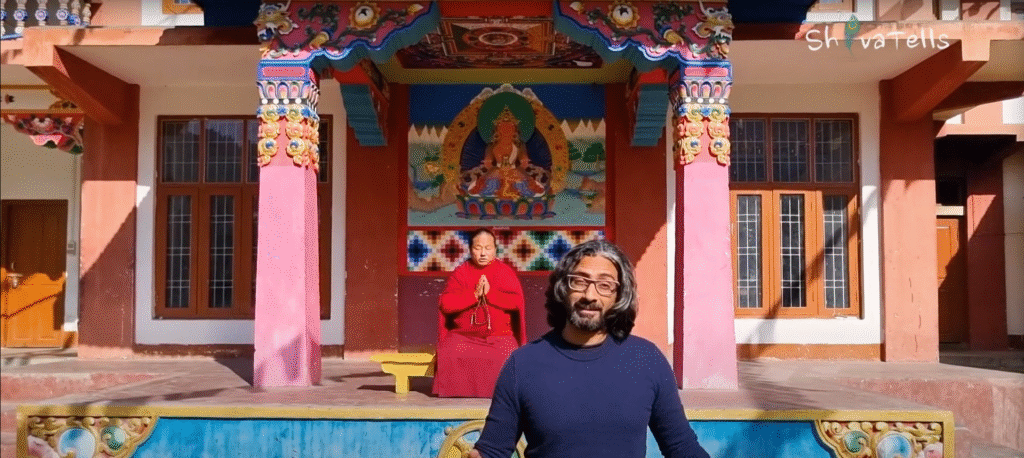
“My method is simple,” Yashi begins, his voice calm and steady. “I chant prayers, offer water, flowers, and incense. These are not just rituals; they are a way to connect with the healing power given by God.”
Yashi’s journey began long ago, under the guidance of his Guru. He recalls spending months meditating alone in the mountains, learning to focus his mind, body, and spirit. “The Guru taught me that this gift isn’t for personal gain. It is for serving others,” he explains. “I don’t treat people to get recognition. I do it because their suffering moves me.”
He believes that God gives different powers to different people, and his is the power to heal. “When I see someone suffering, my heart melts. I feel their pain. That is how I know I must help,” he says.
The Healing Process
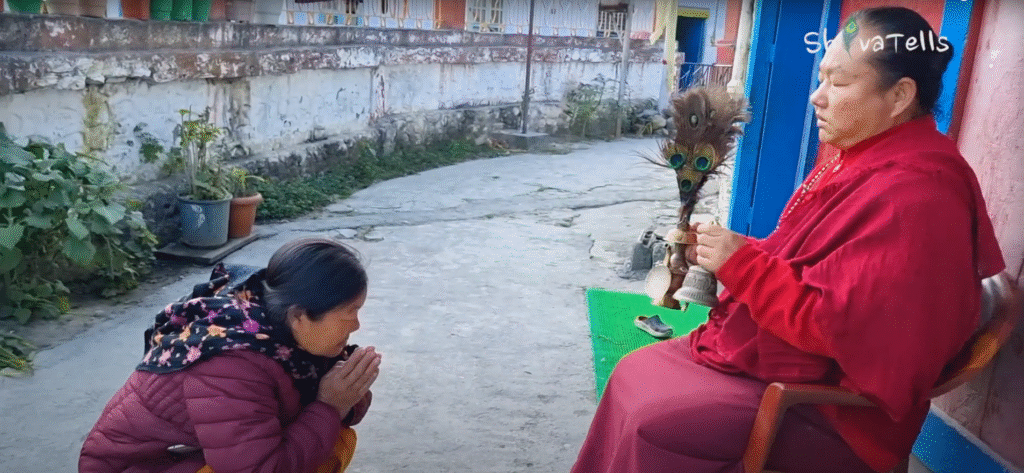
The process of treatment is simple but deeply spiritual. When a patient arrives, Yashi Tenjing Lama sits quietly beside them, chanting mantras in a low, rhythmic voice. The air fills with the gentle aroma of incense and the sight of carefully arranged flowers. Water is offered as a symbol of purity.
He places his hands softly on the patient’s back or limbs, and many patients describe the sensation as a warm, gentle energy moving through their bodies. “It’s not magic,” Yashi explains. “It’s love, care, and patience.”
Patients typically stay for three days of treatment, during which they are not charged any fee. “We treat people free of charge,” says Yashi. “Sometimes, they donate a small amount, and we use that to provide food and lodging for those who stay with us until they are well.”
A Family Tradition of Service
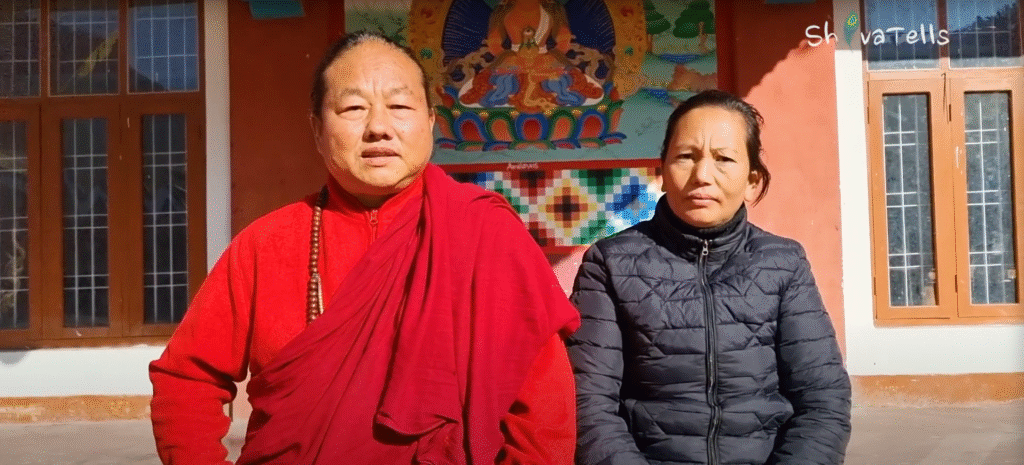
The healing practice isn’t just Yashi’s work. His entire family is involved. His father and mother assist in treatments, and his son, Tenzing Thupten, is learning the same path.
“My parents taught me that humility and service go hand in hand,” says Tenzing Thupten. “We don’t treat anyone differently—whether rich or poor. Everyone deserves care and respect.”
Together, they run a small temple where patients and their families can find shelter, food, and a place of prayer. The atmosphere is simple, yet it exudes a sense of calm and hope. Harinarayan Yadav from nearby Balmua village describes Yashi as “like a god to us,” adding, “He is always chanting prayers, always trying to take away pain and suffering.”
Stories of Hope
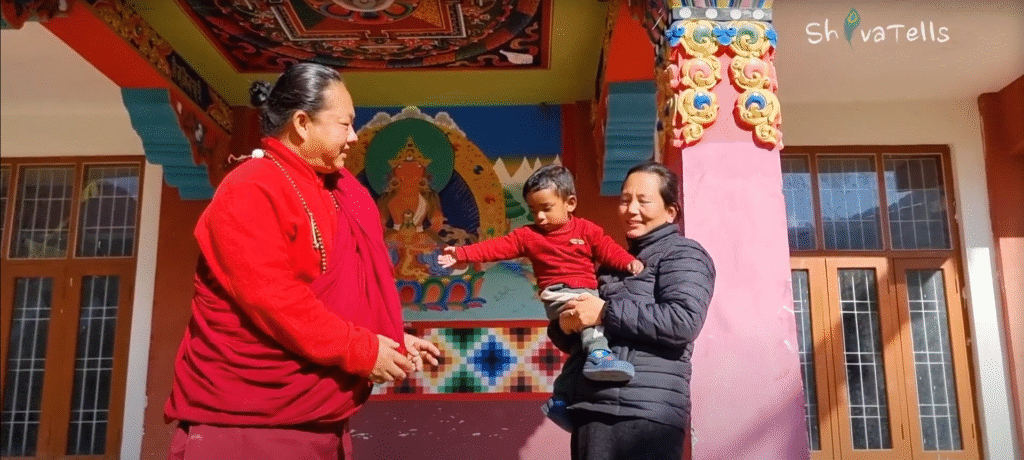
Lhamo, a middle-aged woman from a neighboring village, shares her story: “When I came here, I could barely move my leg. After the first session of treatment, I felt lighter. After three days, I could walk again. It feels like a miracle.”
Tashi Dema, whose father suffered paralysis for years, says, “I don’t know how it works, but when Yashi Lama placed his hands on my father’s back, the pain began to leave. We have hope again.”
For many, the journey to Rupa is long and not easy. Roads wind through mountains and forests, and mobile signals disappear. But every visitor, despite the hardships of travel, returns with stories of relief, hope, and gratitude.
A Wish for the Future
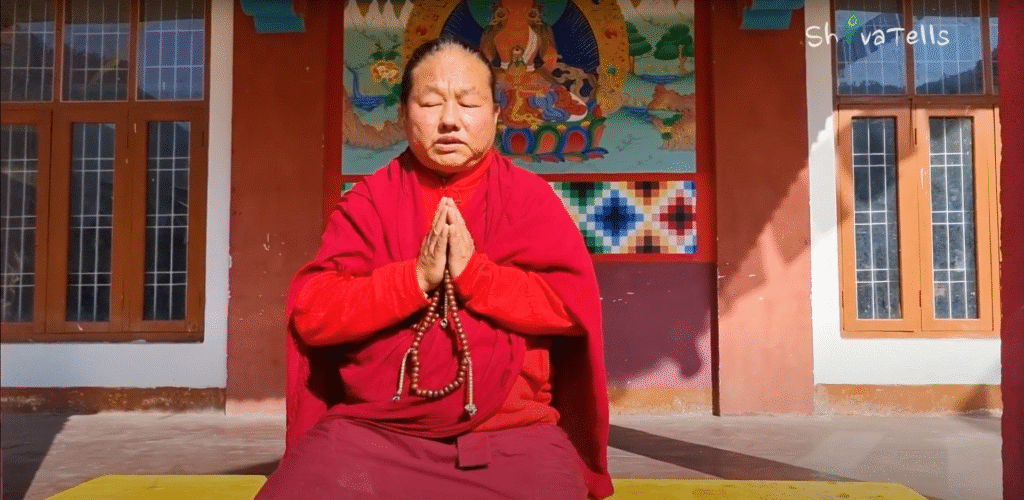
Yashi Tenjing Lama’s only wish is that more people would embrace this way of healing. “If more people tried to help others with a pure heart, the burden on hospitals could lessen,” he explains.
His hope is simple: that the gift of healing is passed on, that more Amchis come forward, and that compassion and care continue to grow in the mountains.
“I don’t want fame or wealth,” he says softly. “I want people to see that helping others is the real path.”
Travel Tips for Visiting Rupa Village, Arunachal Pradesh
- Best Time to Visit: March to October, when the weather is mild and the roads are passable. Avoid the monsoon season (July to September) due to landslides and heavy rains.
- What to Pack: Warm clothes (temperatures can drop at night), good trekking shoes, rain protection, reusable water bottles, and personal medication.
- Local Etiquette: Always ask permission before photographing people or the temple. Dress modestly. Speak softly and respectfully. Show genuine interest in local traditions.
- Connectivity: Mobile networks are limited. Download offline maps and carry a power bank.
- Stay Options: Simple homestays and guesthouses are available in nearby Dirang town. Staying with locals offers an authentic experience and helps support the community.
Top Nearby Places to Explore
- Akshardham Temple – A few hours from Rupa, Akshardham Temple in Delhi is a beautiful architectural marvel built from pink sandstone and white marble. It offers exhibitions on Indian history and spirituality, peaceful gardens, and an impressive light and sound show in the evening.
- Lotus Temple – Known for its lotus-like structure, the Lotus Temple in Delhi is open to all faiths. It’s a place of quiet reflection, meditation, and peace. The simplicity of its design and the serene surroundings offer a break from city life.
- Aravalli Biodiversity Park – Near Gurgaon, this restored part of the Aravalli hills offers easy walking and cycling trails, native plant species, and small wildlife. It’s perfect for nature lovers interested in eco-tourism and peaceful outdoor walks.
- India Gate and Rajpath – The iconic India Gate stands not just as a war memorial but as a gathering place for locals and tourists alike. The surrounding lawns and Rajpath boulevard are ideal for picnics, kite flying, and evening strolls. Local food stalls provide a taste of Delhi’s street food culture.
